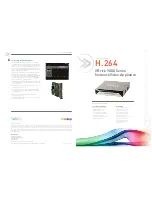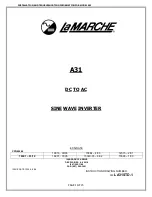
SECTION 8 |
Installation
31
Preventing Radio Frequency Interference (RFI): The unit uses high power switching
circuits that generate RFI. This RFI is limited to the required standards. Locate
any electronic equipment susceptible to radio frequency and electromagnetic
interference as far away from the inverter as possible. Read Section 3 “Limiting
Electromagnetic Interference (EMI)” for additional information.
8.2 OVERALL DIMENSIONS
The overall dimensions and the location of the mounting slots are shown in fig. 8.1.
8.3 MOUNTING ORIENTATION
The unit has air intake and exhaust openings for the cooling fan. It has to be
mounted in such a manner so that small objects should not be able to fall easily into
the unit from these openings and cause electrical / mechanical damage. Also, the
mounting orientation should be such that if the internal components overheat and
melt / dislodge due to a catastrophic failure, the melted / hot dislodged portions
should not be able to fall out of the unit on to a combustible material and cause a
fire hazard. The size of openings has been limited as per the safety requirements
to prevent the above possibilities when the unit is mounted in the recommended
orientations. In order to meet the regulatory safety requirements, the mounting has
to satisfy the following requirements:
- Mount on a non-combustible material.
- The mounting surface should be able to support the weight of the unit
- Mount horizontally on a horizontal surface – above a horizontal surface (e.g. table
top or a shelf).
- Mount horizontally on a vertical surface – the unit can be mounted on a vertical
surface (like a wall) with the fan axis horizontal (fan opening facing left or right).
WARNING!
Mounting the unit vertically on a vertical surface is NoT recommended (fan
opening facing up or down). As explained above, this is to prevent falling
of objects into the unit through the fan opening when the fan opening
faces up. If fan opening faces down, hot damaged component may fall
out. The surface of the unit is likely to be at an elevated temperature in
conditions of higher load and higher ambient temperature. Hence, the unit
should be installed in a manner where it is not likely to come in contact
with any person.
















































